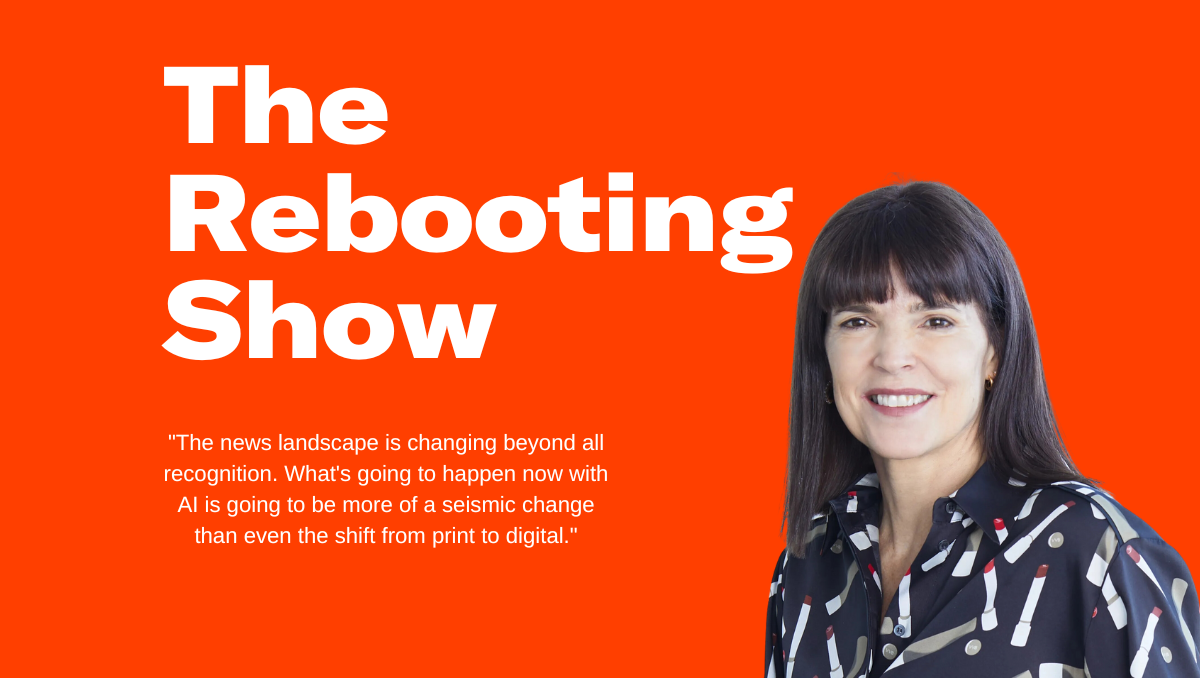The WSJ's Emma Tucker on going audience-first
Judging from the responses I got, London is the epicenter of iPhone thievery. I’m going to be back in late May. My goal is to make it out with my phone in my posession.
This week, I had a conversation with Emma Tucker, the editor-in-chief at The Wall Street Journal, who is the classic changemaker role that leads to all kinds of pushback. I was struck by how much Emma’s message resonates with what Axios CEO Jim VandeHei has been saying. No matter what comes with the economy, the third-party cookie, AI, publishers have to be distinctive or they have no future.
First up, I want to tell you about a research project The Rebooting is doing with Permutive.
Last year was a rough one for publishers’ ad businesses. There were two types of people I spoke to: those who said the ad market sucked for them and those who lied to me. This year, there are signs of stabilization, as the market adapts to the changes brought about by traffic declines and signal loss.
The Rebooting has partnered with Permutive to do a research project on the state of publisher ad businesses. We put together a 10-question survey to understand the state of publisher ad revenue so far this year. The responses will form the basis of a research report to uncover:
- The areas of publisher ad businesses that are expanding
- The biggest challenges publishers face in their ad businesses
- The status of publishers’ direct-sold advertising revenue
If you’re on the revenue side of a publisher, please take the 10-question survey. It should take only 5-7 minutes to complete. Thanks in advance – and thanks to Permutive for underwriting this research.
The Wall Street Journal’s Emma Tucker on audience-first publishing

Last week, I was in an elevator in London with a pair of veteran publishing executives. One remarked, “People hate change. It’s unnatural.” I found that refreshing, because the American approach is very Dr. Pangloss and pretends that all change is good and without downsides. In fact, change is necessary but often unpleasant.
Emma Tucker was named the editor-in-chief of The Wall Street Journal (and Dow Jones Newswires) in early 2023, after three years as editor of the Sunday Times in London. She was brought in with a mandate to shake up the Journal. On the face of it, the Journal is in a great position compared to other newspapers. Leave aside The New York Times, and consider the headaches at newspapers like The Los Angeles Times and The Washington Post.
The WSJ is somewhat protected as a business publication. It has 4 million subscribers, and digital subscribers have grown by 60% since 2019. It is still the first stop for advertisers looking to reach business decisionmakers.
But the Journal is still in a media market that Emma describes as changed “beyond recognition” and that is at risk of the type of secular decline seen in the German car industry. The Journal itself has its own challenges: an aging subscriber base that’s pushing 60, a stodgy internal culture and often convoluted editing process that’s exacting yet hard to square in the current realities of publishing. Like other publishers (and companies), it also has a restive workforce.
Emma and I discuss the changes she’s instituted since joining, from the small bore like doing away with honorifics (RIP, messrs) and putting a cat on a front page to the more substantial changes in top personnel and overhauling the WSJ’s DC bureau. Her moves even led to a New York piece that wondered, “Who is going to get Tucked next?” (Her deputy is apparently known as an “angel of death,” which is a catchy LinkedIn endorsement.)
Some takeaways from our conversation:
Transitioning from a “print ethos.” Print still gives publications heft, and I suspect that will become more valuable in a world filled with synthetic content, much of it utter crap. But that role is more of being a “shop window,” Emma told me the Journal needs a “definitive move away from print” to serving digital audiences rather than seeing the newspaper as a central distribution channel.
- “The ethos of print was very established and very much defined the way we thought about our journalism. My view was it's time now to move away from that and really, really think hard about the expectations of digital audiences."
Adopting an audience-first mindset. It sounds obvious, but the challenge for many publishers is adopting audience-first strategies rather than trying to be all things to all people (and all algorithms). That was the main takeaway from a content review Emma commissioned soon after taking on the top role. Those exercises are usually preludes to organizational change. The main theme highlighted in the review: being an “audience-first publication for people that mean business.” Translation: more investigative pieces, less filler content, more “constructive journalism” that serves audience needs instead of winning Twitter/X.
- “That means really thinking hard about our journalism, how we deliver it, when we deliver it, the format we use to deliver it in, and asking ourselves constantly, are we adding value to our audiences or to our readers.”
Engagement is the new uniques. The traffic era of publishing has ended. Nobody brags about their ComScore uniques anymore; engagement is the new North Star. That’s particularly true in subscription models, which are natural outgrowths of audience-first strategies. With subscriptions, churn is the boogeyman. I found it telling Emma didn’t cite traffic numbers but highlighted that the Journal had decreased churn by 6% in the past year. The Journal has a newsroom analytics dashboard that measures KPIs like guest visits, conversion rates, female readership, and young readership.
- "I'm asking the newsroom to focus on engagement, not traffic, not clicks, but engagement. How long are people spending reading our journalism? How often do they come back to us?"
Other topics we discussed:
- Why American journalists are prone to navel gazing
- Balancing the need to attract younger readers without alienating the old codgers
- How to prepare for the “seismic changes” of AI
- The need to focus on what makes you irreplaceable
Listen to the conversation on Apple | Spotify | other podcast platforms
Thanks for reading. Send me a note with feedback by hitting reply. Or email me directly at bmorrissey@therebooting.com.





